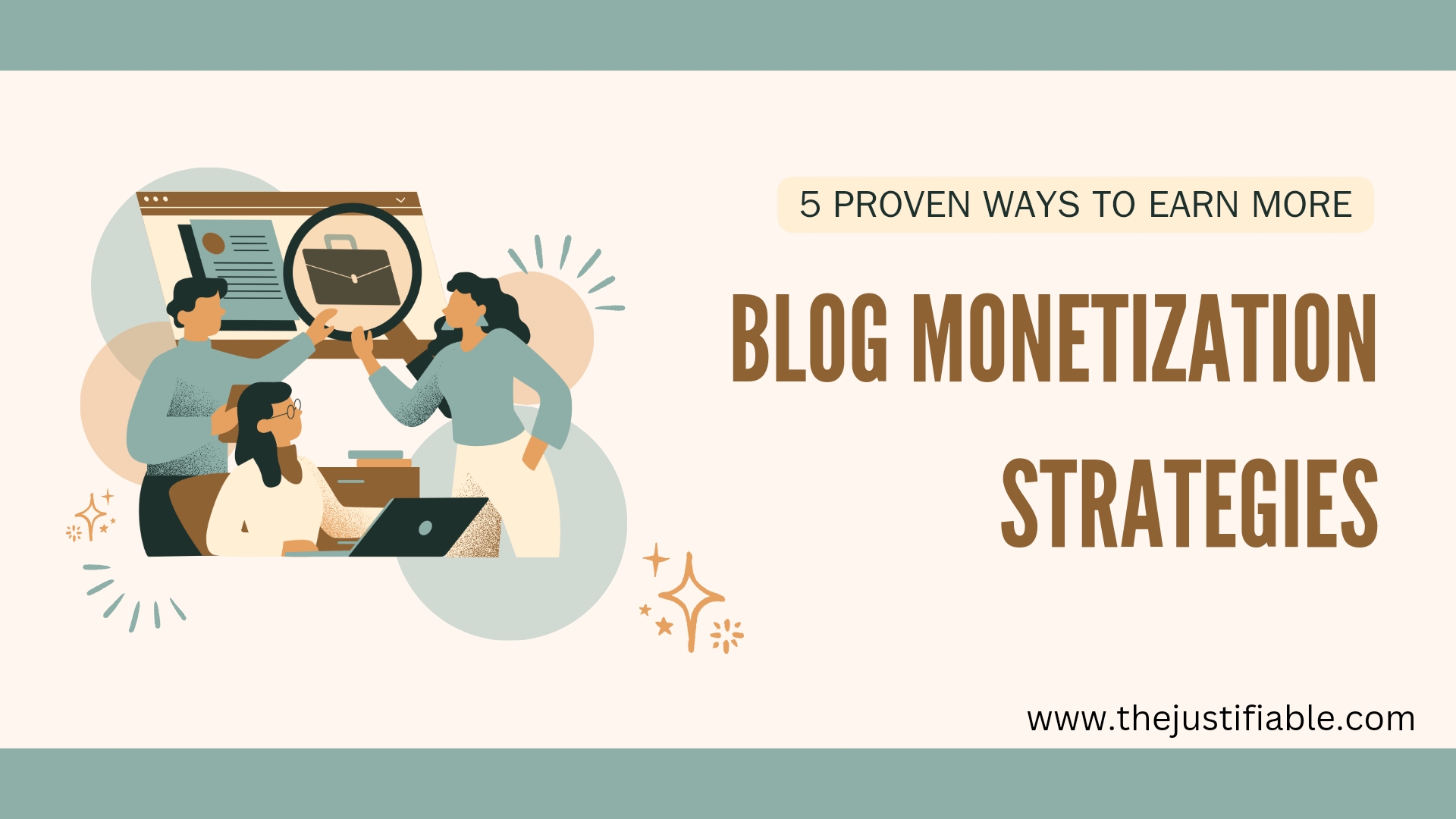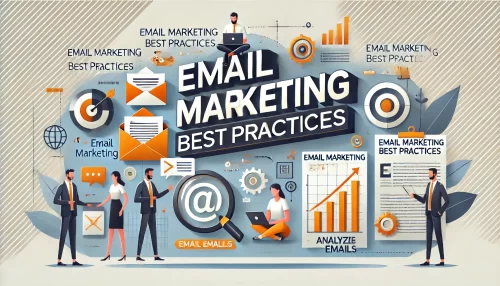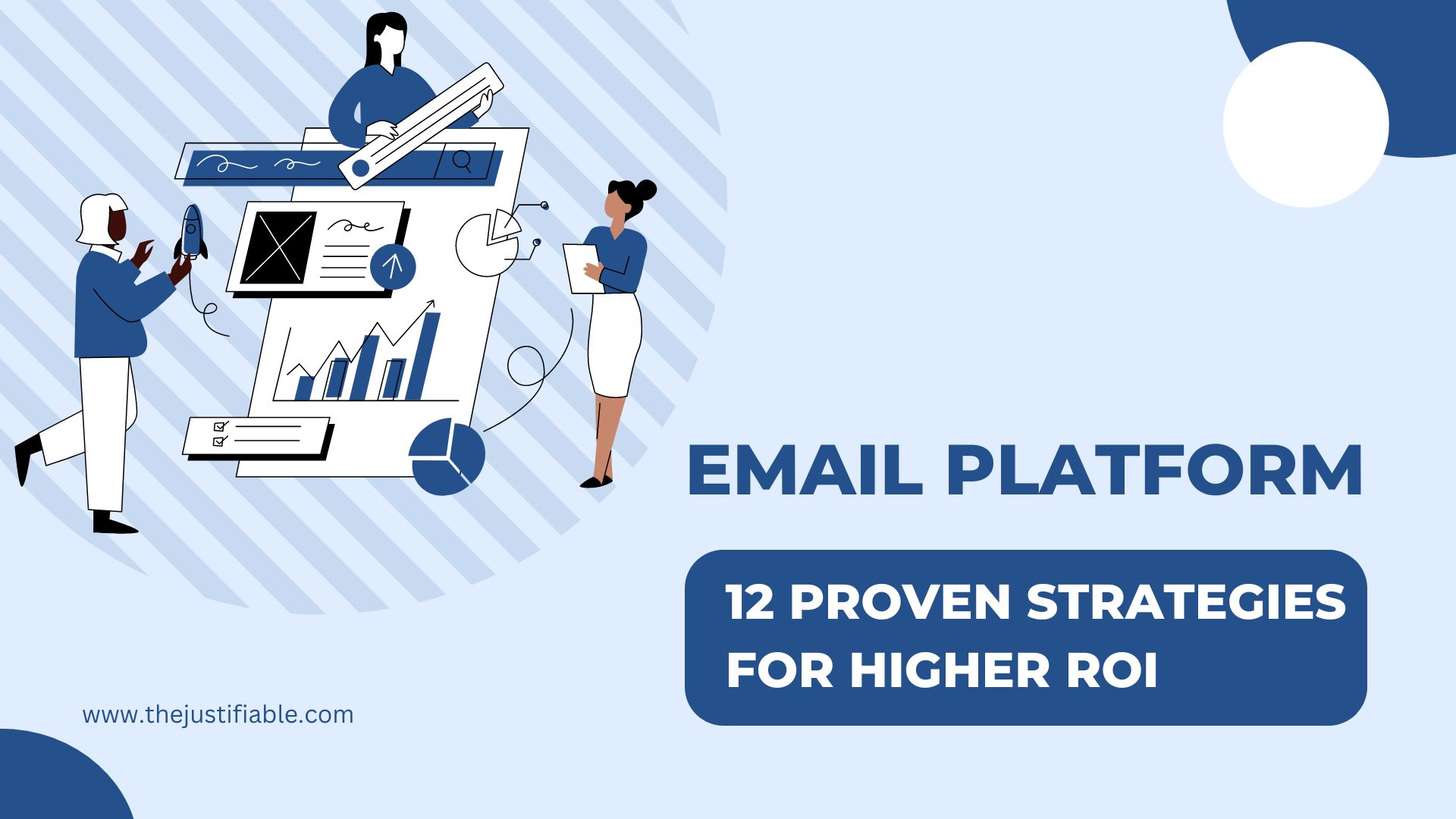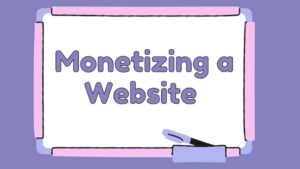Are you seeking innovative ways to generate income from your blog? Wondering how you can turn your passion for blogging into a lucrative venture? Blog monetization strategies have evolved, offering diverse opportunities for bloggers to earn. But where do you start, and what approaches will suit your blog best?
In my experience, understanding the variety of monetization methods is the first step toward unlocking your blog’s earning potential. From affiliate marketing to creating online courses, there are numerous paths to explore. Each strategy has its unique benefits and challenges, making it crucial to choose the ones that align with your content and audience.
I strongly believe that successful blog monetization requires more than just implementing strategies; it demands a deep understanding of your audience’s needs and preferences. By providing value through high-quality, engaging content, you establish trust and credibility, which are essential for monetization.
In this guide, we’ll dive into five proven blog monetization strategies, offering insights and practical tips to help you maximize your earnings. Let’s embark on this journey to transform your blog into a revenue-generating platform.
1. The Power of Affiliate Marketing: Boost Your Blog’s Revenue
Did you know that affiliate marketing spending is expected to reach $42.6 billion worldwide by 2026? This staggering figure highlights the immense potential of affiliate marketing as a key blog monetization strategy. By harnessing the power of affiliate marketing, bloggers can significantly boost their revenue through commissions by promoting products or services that resonate with their audience.
In my opinion, the beauty of affiliate marketing lies in its simplicity and efficiency. You create content that naturally integrates product recommendations, and when your readers make a purchase through your affiliate links, you earn a commission. This not only allows you to monetize your blog effectively but also adds value to your audience by guiding them to products that can solve their problems or enhance their lives.
Most importantly, success in affiliate marketing requires a strategic approach. I recommend starting with products or services that you are genuinely passionate about and that align with your blog’s niche. This authenticity builds trust among your readers, making them more likely to consider your recommendations. Remember, affiliate marketing is not just about making sales; it’s about building relationships and offering real solutions to your audience.
Affiliate Programs Recommendations
FlexOffers
| MyLead
| ShareASale
|
Navigating the Basics of Affiliate Marketing for Beginners
Embarking on affiliate marketing can seem daunting for beginners, but it’s a journey well worth taking. The first step is to understand the basics: affiliate marketing involves promoting others’ products and earning a commission for sales or leads generated from your referrals. It’s a win-win for both the blogger and the merchant.
In my experience, the key to getting started is to choose the right affiliate programs that align with your content and audience. Look for products that you believe in and that add value to your readers. This ensures that your marketing efforts feel genuine and don’t detract from the user experience of your blog.
I strongly believe in the importance of creating high-quality content that seamlessly incorporates your affiliate links. This could be through product reviews, how-to guides, or listicles. Your content should aim to inform, engage, and assist your audience in making informed decisions. Remember, transparency is crucial; always disclose your affiliate relationships to your readers. This honesty fosters trust and respect, further cementing your blog as a reliable source of information.
Maximizing Earnings: Strategies for Selecting Profitable Affiliates
Selecting the right affiliates is crucial for maximizing your blog’s revenue potential. It seems to me that many bloggers rush into partnerships without fully assessing the profitability and relevance of the affiliate products to their audience. To navigate this, I suggest starting with products or services you’ve personally used or those that come highly recommended within your niche. This firsthand experience lends authenticity to your promotions, a key factor in driving conversions.
In my opinion, understanding your audience’s preferences and needs is pivotal. Conduct surveys or analyze engagement data to uncover insights into their interests and buying behaviors. This information is invaluable when choosing affiliates that resonate with your readers. Moreover, my recommendation is to look for affiliate programs with competitive commission rates and a proven track record of success among other bloggers in your niche. These criteria often indicate that a product is well-received and can be profitable for your blog as well.
From my perspective, diversification is another strategy that shouldn’t be overlooked. Don’t put all your eggs in one basket by relying on a single affiliate program. Instead, I strongly believe in diversifying your affiliate partnerships to include a mix of products and services. This not only mitigates risks but also increases the chances of finding truly profitable affiliates. Pay attention to the terms and conditions of each affiliate program, focusing on those that offer long-term cookies, high conversion rates, and reliable support for affiliates.
Enhancing Your Blog’s Credibility to Drive Affiliate Sales
In my experience, credibility is the cornerstone of successful affiliate marketing. Readers are savvy; they can tell when a blog is solely focused on sales rather than providing genuine value. Thus, it’s important to balance monetization efforts with high-quality, informative content. I recommend incorporating affiliate links into comprehensive guides, reviews, and tutorials that help your audience solve problems or make informed decisions. This approach ensures that your affiliate marketing feels natural and adds value, rather than appearing forced or salesy.
Speaking personally, transparency is non-negotiable. Always disclose your affiliate relationships upfront. This honesty not only complies with legal requirements but also builds trust with your readers. I believe that when readers know you’re transparent about your affiliations, they’re more likely to support you by clicking on your affiliate links. Moreover, sharing your personal experience with the products or highlighting how they’ve benefited you can significantly enhance credibility and persuade readers to consider the recommendation seriously.
From my perspective, fostering a sense of community around your blog also plays a critical role in enhancing credibility. Engage with your readers through comments, social media, and email newsletters. Listen to their feedback and recommendations. This engagement creates a loyal readership that values your opinions and is more inclined to trust your affiliate recommendations. In my estimation, a blog that listens and responds to its audience is a blog that grows not only in credibility but also in profitability.
2. Email Marketing Mastery: Convert Subscribers into Revenue
“Email has an ability many channels don’t: creating valuable, personal touches—at scale.” – David Newman. In the realm of blog monetization strategies, email marketing stands out for its unparalleled capacity to build direct, personal connections with your audience. By mastering email marketing, bloggers can transform their subscriber list into a significant revenue stream, leveraging these relationships to promote content, products, and services effectively.
I believe that the success of email marketing hinges on delivering value far beyond mere promotions. It’s about engaging your subscribers with content that resonates with their interests and needs, thus fostering trust and loyalty. This approach not only enhances open and click-through rates but also sets the stage for higher conversion rates when you do present an offer or affiliate link. By prioritizing value over sales, you cultivate an environment where subscribers are more receptive to your recommendations.
Most importantly, segmentation plays a critical role in maximizing the effectiveness of your email marketing efforts. By categorizing your subscribers based on their behavior, preferences, and engagement levels, you can tailor your content to suit their specific interests. This personalized approach significantly boosts engagement, as subscribers feel that you’re speaking directly to them. My recommendation is to leverage analytics and subscriber feedback to continually refine your segmentation strategies, ensuring that each email adds value to the recipient’s day.
From my perspective, consistency is key in email marketing. Regular, predictable communication keeps your blog top of mind for subscribers, but it’s crucial to balance frequency with quality. Bombarding subscribers with too much content can lead to disengagement, while infrequent communication might cause them to forget about your blog. My suggestion is to find a sweet spot that keeps subscribers informed and engaged without overwhelming them, ultimately leading to a more robust and profitable email marketing strategy.
Email Marketing Recommendations
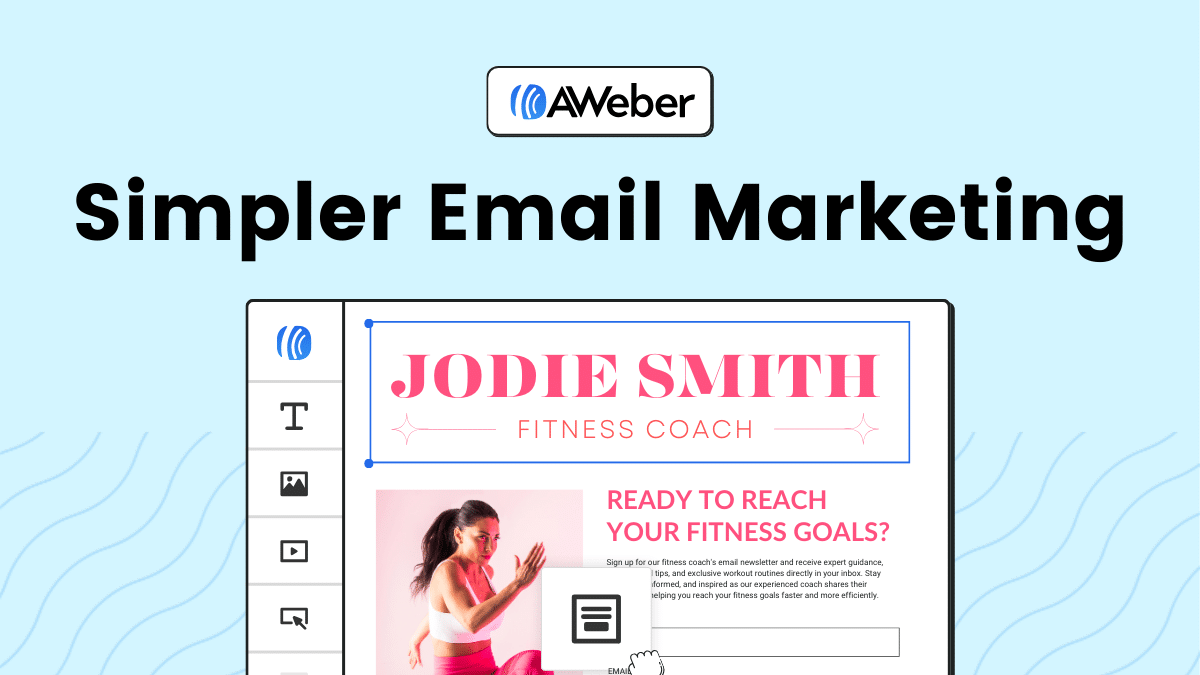 Aweber
| 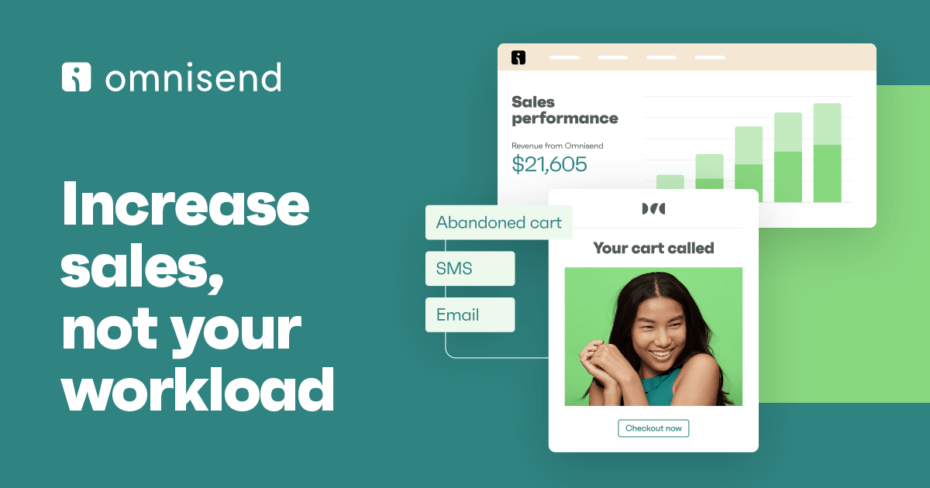 Omnisend
| 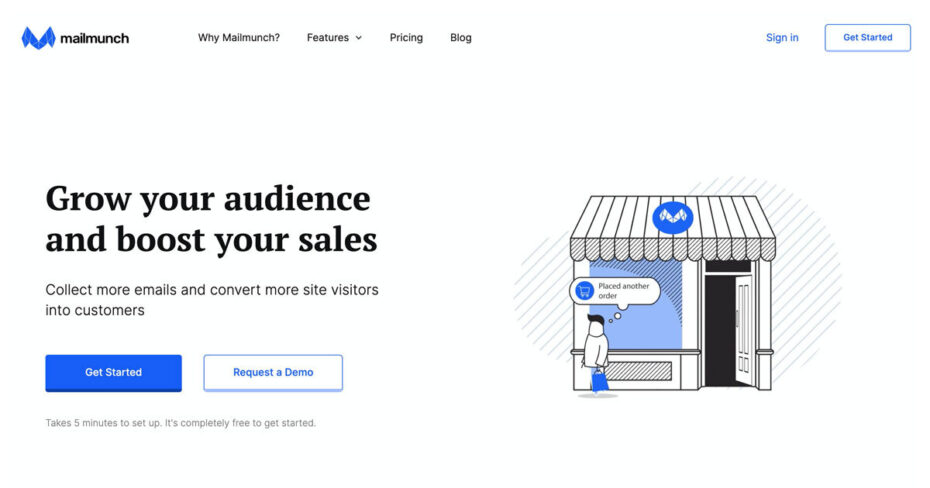 Mailmunch
|
Building a Loyal Subscriber Base for Your Blog
“A small list that wants exactly what you’re offering is better than a bigger list that isn’t committed.” – Ramsay Leimenstoll. The foundation of effective email marketing is a loyal subscriber base that actively engages with your content. Building this dedicated following requires a strategic approach, focusing on attracting and retaining subscribers who find genuine value in your blog.
Firstly, offering exclusive content or incentives for signing up can significantly boost your subscription rates. Whether it’s an eBook, a webinar, or access to premium content, providing something of value in exchange for an email address can attract subscribers who are genuinely interested in your niche. This initial value proposition sets the stage for a relationship based on mutual benefit, where subscribers receive content they value, and you gain an engaged audience for your marketing efforts.
In my experience, fostering a sense of community and belonging can also play a pivotal role in building loyalty among your subscribers. Engage with your audience through personalized emails, solicit feedback, and encourage interaction. This two-way communication not only enhances your understanding of your audience’s needs but also makes subscribers feel valued and heard. I’m of the mind that an engaged and loyal subscriber base is more likely to support your blog monetization efforts, whether through affiliate purchases, product sales, or participation in sponsored content.
Lastly, it’s essential to maintain transparency and respect your subscribers’ privacy. Clearly communicate what subscribers can expect in terms of content and frequency, and make it easy for them to adjust their preferences or unsubscribe. This respect for subscriber autonomy builds trust and reduces churn rates. In my opinion, a transparent and subscriber-centric approach is crucial for long-term success in email marketing, laying the groundwork for a loyal subscriber base that actively contributes to your blog’s revenue.
Crafting Irresistible Email Campaigns that Sell
“To be successful, you have to have your heart in your business, and your business in your heart.” – Thomas Watson. This quote encapsulates the essence of creating email campaigns that truly resonate with your audience and drive sales. In my opinion, the key to crafting irresistible email campaigns lies in understanding your audience deeply and aligning your offerings with their needs and desires.
Firstly, I recommend focusing on the storytelling aspect of your emails. A compelling narrative that connects your product or service to your subscribers’ personal experiences or challenges can significantly increase engagement and conversion rates. This approach makes your emails feel less like a sales pitch and more like a friend offering a helpful solution. Incorporating testimonials or success stories can also add authenticity and persuade subscribers by showing real-life applications of what you’re selling.
Personalization is another critical factor. It seems to me that personalized emails, which go beyond just including the subscriber’s name, can dramatically improve the effectiveness of your campaigns. Tailoring content based on past behavior, preferences, or purchase history makes each email feel bespoke, increasing the likelihood of a positive response. My suggestion is to use data analytics to segment your audience and customize your messages accordingly, making each subscriber feel understood and valued.
Lastly, a clear and compelling call-to-action (CTA) is essential for converting interest into action. My recommendation is to make your CTA buttons or links stand out visually and verbally, using action-oriented language that encourages immediate response. Testing different CTA placements and wording can help identify what works best for your audience. From my perspective, a well-crafted CTA not only guides subscribers on what to do next but also creates a sense of urgency, motivating them to act now rather than later.
Analyzing and Optimizing Your Email Marketing ROI
“However beautiful the strategy, you should occasionally look at the results.” – Winston Churchill. When it comes to email marketing, regularly analyzing and optimizing your campaigns is crucial for maximizing return on investment (ROI). Understanding what metrics to track and how to interpret them can provide insights into what’s working and what’s not, allowing for data-driven decisions to improve future campaigns.
Engagement metrics such as open rates, click-through rates, and conversion rates are fundamental indicators of your campaign’s performance. I believe that by closely monitoring these metrics, you can gauge the resonance of your content with your audience and identify areas for improvement. For example, a low open rate might suggest that your subject lines are not compelling enough, while a low conversion rate could indicate a mismatch between the offer and the audience’s interests.
Segmentation and A/B testing are powerful tools for optimizing your email marketing efforts. I recommend conducting A/B tests on various elements of your emails, including subject lines, email content, and CTAs, to determine what variations yield the best results. This iterative process allows you to refine your approach based on concrete data, gradually improving the effectiveness of your campaigns.
In my estimation, calculating your email marketing ROI involves comparing the revenue generated from your campaigns against the costs of running them. This analysis should extend beyond direct sales to include the long-term value of building a loyal subscriber base. From my perspective, investing in email marketing is not just about immediate returns but also about nurturing relationships that can lead to sustained growth and profitability for your blog.
3. Display Ads Unveiled: A Goldmine for Bloggers
In the diverse ecosystem of blog monetization, display ads stand out as a cornerstone strategy, akin to finding a goldmine in your backyard. The journey from embedding ads to witnessing a significant revenue stream can be complex, with the choice of ad network playing a pivotal role. Comparing ad networks like Monetag, Adsterra, HilltopAds, and PopAds reveals a spectrum of opportunities tailored to different types of content and audiences.
When considering which ad network to partner with, it’s crucial to assess the compatibility of the network with your blog’s niche and audience demographics. Monetag, for instance, is renowned for its user-friendly interface and robust support system, making it an excellent choice for bloggers new to display advertising. On the other hand, Adsterra offers a wide range of ad formats and high CPM rates, which could be more beneficial for blogs with a substantial amount of traffic and a diverse international audience.
Moreover, networks like HilltopAds specialize in non-intrusive advertising options, ideal for bloggers who prioritize user experience alongside revenue generation. Meanwhile, PopAds stands out for its focus on pop-under ads, offering higher rates for such formats but requiring careful consideration to balance monetization with user satisfaction. My recommendation for bloggers is to start by evaluating the unique features and strengths of each network in relation to their blog’s content, traffic volume, and audience engagement patterns.
Selecting the Right Display Ad Networks for Your Blog
Choosing the right display ad network is akin to selecting a business partner; it requires thorough research and alignment of objectives. The decision should not solely be based on revenue potential but also consider factors such as ad relevancy, network reputation, and payment terms. For instance, Monetag excels with its adaptive algorithm that matches ads to your blog’s content and audience, ensuring relevancy and enhancing the likelihood of clicks.
In my view, it’s also important to consider the ease of use and support provided by the ad network. New bloggers, in particular, will benefit from networks like Adsterra, which offers dedicated account managers and detailed analytics to help optimize ad performance. This level of support can be crucial in navigating the complexities of ad optimization and maximizing earnings.
Finally, I strongly believe in the value of diversification when it comes to display advertising. Engaging with multiple ad networks, such as HilltopAds and PopAds, allows bloggers to compare performance and optimize their ad revenue strategy. However, it’s essential to monitor the impact on user experience closely. Excessive or poorly placed ads can deter readers, negating the benefits of increased revenue. Therefore, my recommendation is to start with a primary network that aligns with your blog’s goals and audience, then experiment with additional networks as you grow.
Placement and Design Tips for Maximizing Ad Revenue
When it comes to display advertising, the placement and design of ads can significantly influence your blog’s revenue potential. Most importantly, ads should be positioned in high-traffic areas where they are easily visible to your audience without disrupting the natural flow of content. According to industry insights, ads placed above the fold tend to perform better in terms of visibility and click-through rates. However, integrating ads seamlessly within the content can also yield high engagement, provided they are relevant and add value to the reader’s experience.
I would say that the design of your ads also plays a crucial role in their performance. Ads that are visually appealing and align with the look and feel of your blog are more likely to capture the attention of your readers. This doesn’t mean they have to be flashy; on the contrary, ads that blend well with the blog’s design tend to be less intrusive and more effective. My suggestion is to use ad formats that are responsive and adapt to different screen sizes, ensuring a consistent experience across desktop and mobile devices.
From my perspective, testing different ad placements and designs is essential to find what works best for your blog. Utilize A/B testing to compare the performance of ads in various locations and with different designs. This data-driven approach allows you to make informed decisions and optimize ad placements for maximum revenue. Remember, the goal is not only to increase clicks but also to maintain the quality and integrity of your blog’s content and design.
Balancing User Experience with Ad Profitability
Achieving a balance between user experience and ad profitability is one of the most challenging aspects of blog monetization. From my point of view, it is crucial to prioritize your readers’ experience, as the long-term success of your blog depends on retaining a loyal audience. Intrusive ads or excessive advertising can lead to higher bounce rates and a decrease in reader engagement. Therefore, it’s essential to carefully consider the number and types of ads you display on your blog.
I strongly believe in the importance of selecting ad formats that complement rather than disrupt the user experience. For example, native ads can be a less intrusive option as they mimic the look and feel of your blog’s content, providing a smoother integration with the rest of the material. Additionally, consider implementing frequency capping to limit the number of times an ad is shown to the same visitor, preventing ad fatigue and potential annoyance.
In my honest opinion, engaging with your audience to gather feedback on their experience with ads on your blog can provide invaluable insights. This direct communication can help you understand your audience’s tolerance for ads and identify areas for improvement. My recommendation is to always be transparent with your readers about the necessity of ads for supporting your blog. By explaining the role of ads in providing free, high-quality content, you can foster understanding and patience among your audience, helping to maintain a positive user experience while optimizing ad profitability.
4. Course Creation: Transform Your Expertise into Income
While creating an online course might seem daunting at first, it offers a unique opportunity to monetize your expertise and provide valuable knowledge to your audience. It’s a strategy that requires effort and dedication but can significantly increase your blog’s revenue. By leveraging the content you already have, you can identify areas of expertise that resonate with your audience and have the potential to be developed into comprehensive online courses.
Firstly, analyzing your blog’s most popular posts is a great way to identify potential course topics. These are topics that already interest your audience, indicating a demand for deeper knowledge in these areas. I suggest looking for patterns in reader engagement, comments, and questions as these can highlight specific interests or gaps in knowledge that your course could address. Creating a course around these topics not only maximizes your chances of success but also aligns with your audience’s expectations and needs.
Next, consider the problems your blog solves for your readers and how you can expand on these solutions in a course format. My recommendation is to choose topics that lend themselves to a structured learning path, enabling you to guide students from beginner to advanced levels. This not only increases the value of your course but also makes it more appealing to a broader audience. Remember, the more specific and solution-focused your course topic is, the more likely it is to attract enrollees.
Lastly, engaging directly with your audience can provide invaluable insights into what course topics they are most interested in. I strongly believe in the power of surveys, social media polls, or direct conversations to gather feedback. This direct approach not only helps validate your course idea but also strengthens your relationship with your audience by involving them in the creation process. In my experience, courses developed with audience input tend to have higher engagement and satisfaction rates, as they’re tailor-made to meet the learners’ needs.
Identifying Profitable Course Topics from Your Blog Content
Acknowledging that not all blog content is suitable for transformation into a course, the key lies in identifying which topics have the potential to be both profitable and engaging as an online course. It’s essential to strike a balance between your areas of expertise and what your audience is willing to pay to learn.
To begin, I recommend conducting a thorough analysis of your blog analytics. Look for posts that have consistently high traffic, engagement, and share rates. These metrics are strong indicators of topics that your audience finds valuable and is possibly willing to explore in more depth. High-engagement topics often represent areas where readers are seeking more comprehensive guidance or advanced knowledge, making them ideal candidates for course material.
Moreover, it’s important to consider the competitive landscape. I would say that researching existing courses on similar topics can provide insights into market saturation and potential unique selling propositions for your course. However, I believe that even in crowded markets, there’s room for new entrants who can offer a fresh perspective or unique approach. Use your unique voice and insights gained from interacting with your blog audience to create a course that stands out.
Finally, from my perspective, the feasibility of creating a course should also factor into your decision. Evaluate your ability to provide in-depth content on the topic, including the creation of multimedia resources, exercises, and possibly even community support.
My suggestion is to start with a mini-course or a series of workshops to test the waters before committing to more extensive course development. This approach allows you to gauge interest and gather feedback with minimal initial investment, laying a solid foundation for a more comprehensive course in the future.
Essentials of Online Course Creation for Bloggers
Creating an online course is a fantastic way to deepen your engagement with your audience while monetizing your expertise. Most importantly, the foundation of a successful course is high-quality content that addresses a specific need or solves a problem for your audience.
I suggest starting with a detailed course outline that maps out each module and lesson, ensuring a logical progression that guides learners from start to finish. This structure not only aids in content creation but also helps potential students understand what they will gain from enrolling in your course.
In my opinion, incorporating various types of content, such as videos, quizzes, and downloadable resources, can significantly enhance the learning experience. This diversity caters to different learning styles and keeps the course engaging. Additionally, I recommend setting clear learning objectives for each section of your course. These objectives should align with the overall goals of your audience, making the course’s benefits clear and motivating students to complete the course.
From my perspective, the technical side of course creation should not be overlooked. Choosing the right platform is crucial, as it affects the delivery of your course and the user experience. Options range from hosted platforms that offer ease of use and built-in marketing features to self-hosted solutions that offer greater control and customization.
My advice is to weigh the pros and cons of each platform in relation to your technical skills, budget, and long-term goals for your course. Remember, the platform you choose should support your content delivery style and make it easy for your audience to access and engage with your course.
Marketing Your Course to Your Blog Audience Effectively
Marketing your course effectively to your blog audience begins with understanding their interests and pain points. My recommendation is to integrate course promotion seamlessly into your existing content. This could be through blog posts that address topics related to your course content, offering readers a natural transition to your course as a solution to their needs. Highlighting the value and outcomes of your course in these posts can entice readers to learn more and potentially enroll.
Email marketing is another powerful tool for promoting your course. I strongly believe in the effectiveness of a well-crafted email campaign that nurtures your subscribers towards making a purchase. Start by teasing the course content in your newsletters, then provide exclusive offers or early access to your subscribers as a way to reward their loyalty and increase conversions. Personal stories or testimonials about the course’s impact can further bolster your email marketing efforts by adding a layer of trust and relatability.
Lastly, leveraging social media platforms can amplify your course’s reach beyond your current audience. I would say that creating shareable content that highlights key insights or offers from your course can generate buzz and attract new learners. Engaging with your followers through live Q&A sessions, webinars, or sneak peeks into the course content can also drive interest and enrollment.
In my view, a strategic approach to social media, combined with consistent messaging across all channels, is key to effectively marketing your course to both your existing blog audience and new prospects.
5. Membership Sites: Unlock Recurring Revenue from Your Blog
It may come as a surprise to many bloggers, but transitioning your blog into a membership site can be a game-changer in terms of revenue generation. This strategy not only elevates the value provided to your audience but also establishes a consistent income stream. By offering exclusive content or unique community access, you can significantly enhance user engagement and loyalty, which are critical components of a successful subscription model.
The first step in unlocking this potential is to identify what unique value you can offer to justify a subscription fee. Most importantly, this involves a deep dive into your audience’s needs and preferences to determine whether they seek in-depth information (exclusive content) or a sense of belonging and support (community access).
I recommend conducting surveys or engaging in social listening to gather insights directly from your audience, ensuring your membership model aligns with their expectations and desires.
When considering exclusive content, think about creating detailed guides, video tutorials, or even a series of webinars that delve deeper than your regular blog posts. This type of content should offer substantial value that your audience can’t find elsewhere for free.
On the other hand, if you lean towards offering community access, focus on building a platform where members can interact, share experiences, and support each other under your brand’s umbrella. This could be through forums, exclusive social media groups, or live Q&A sessions. The key is to foster a sense of exclusivity and privilege that comes with being a member.
Planning Your Membership Model: Exclusive Content vs. Community Access
Deciding between exclusive content and community access is a pivotal moment in planning your membership model. Both approaches offer unique advantages and cater to different audience needs. It’s fascinating to note that while some members may value the in-depth knowledge and resources provided by exclusive content, others may find greater value in the community aspect, where they can connect with like-minded individuals and share insights.
I believe that the decision should hinge on your blog’s niche and your personal strengths. If you’re an expert in a specific field and enjoy creating comprehensive, informative content, then focusing on exclusive content could be your best bet. This approach allows you to leverage your expertise and provide high-value resources that are worth paying for. Exclusive webinars, in-depth articles, e-books, and courses can all be part of this offering.
Conversely, if your blog thrives on community interaction and you have a knack for facilitating discussions and networking, offering community access might be the way to go. In this model, the value lies in the connections and support network that members gain access to. Creating an exclusive forum, hosting member-only events, and offering direct access to you or other experts in your field can enhance the sense of community.
My suggestion is to carefully consider your audience’s preferences and your unique offerings when deciding between these two models. It’s also possible to combine both elements to some extent, providing a comprehensive membership experience that includes both exclusive content and community features.
Implementing Membership Tiers: Best Practices for Bloggers
Introducing membership tiers to your blog can significantly enhance the subscriber experience by providing options that cater to different needs and budgets. Most importantly, this approach allows you to diversify your offerings and maximize revenue without alienating parts of your audience.
I recommend starting with a clear understanding of the value each tier offers. Ensure that each level provides progressively more value, encouraging upgrades while maintaining a sense of inclusivity across all membership options.
In my opinion, the key to successful membership tiers lies in balancing exclusivity with accessibility. Start by defining a basic tier that offers substantial value beyond what’s available for free on your blog. This could include access to an exclusive newsletter or a members-only forum. Then, incrementally increase the value with each tier, adding premium content, one-on-one consultations, or access to exclusive events for higher tiers.
I suggest keeping the number of tiers manageable – typically two to three – to avoid overwhelming your audience with choices.
From my perspective, transparency is crucial when implementing membership tiers. Clearly communicate the benefits of each tier, helping potential members understand exactly what they’re getting for their investment. This includes detailed descriptions on your sign-up page, as well as FAQs to address common questions.
My recommendation is to engage with your audience through surveys or direct feedback to refine your tier offerings continually. Additionally, consider offering a trial period for higher tiers to give members a taste of the premium experience, which can motivate upgrades and foster long-term commitment.
Retaining Members: Strategies for Long-Term Engagement
Retaining members over the long term requires more than just continuous content delivery; it demands a deep connection with your audience and an understanding of their evolving needs. Most importantly, it involves creating a community feeling that keeps members engaged, valued, and heard.
I recommend establishing regular communication channels, such as newsletters or member forums, to keep members updated and involved. Providing exclusive updates, behind-the-scenes content, or member shoutouts can enhance the sense of belonging and appreciation.
Engagement is key to retention. Thus, I suggest organizing events or challenges that encourage active participation. For instance, hosting live Q&A sessions, webinars, or member-only competitions can significantly increase engagement. T
hese activities not only provide value but also facilitate interactions among members, strengthening the community bond. Feedback loops are also essential; I strongly believe in the power of regularly soliciting feedback through surveys or direct communication to gauge member satisfaction and gather suggestions for improvement.
From my experience, personalization can make a huge difference in member retention. Personalized content recommendations, birthday messages, or customized advice based on member activity can make members feel special and seen.
Additionally, recognizing and rewarding long-term members with exclusive perks or recognition can foster loyalty and encourage continued membership. My impression is that members who feel a personal connection to your blog and community are more likely to remain engaged and renew their subscription. Always aim to exceed expectations and demonstrate the value of their membership through both content and community benefits.
Conclusion: Elevating Your Blog with Smart Monetization Strategies
Implementing smart monetization strategies is essential for transforming your blog from a passion project into a profitable venture. Most importantly, the key to success lies in choosing the right strategies that align with your content, audience, and personal goals.
From affiliate marketing to membership sites, each method offers unique opportunities to generate income while providing value to your readers. I suggest starting with one or two strategies that resonate most with your blogging style and audience preferences, then gradually exploring additional avenues as you grow.
In my opinion, the journey towards successful blog monetization requires patience, experimentation, and continuous learning. It’s crucial to monitor the performance of your chosen strategies, making adjustments based on analytics and feedback from your audience.
My recommendation is to stay informed about the latest trends in blog monetization and be willing to adapt your approach as the digital landscape evolves. Remember, the most successful bloggers are those who maintain a balance between monetization and delivering genuine value to their readers.
From my perspective, the ultimate goal of monetization is not just to earn income but to enhance your blog’s value and sustainability over the long term. By carefully selecting and implementing monetization strategies, you can ensure that your blog not only thrives financially but also continues to engage and inspire your audience.
In my view, a blog that provides consistent, high-quality content while employing smart monetization strategies is well-positioned for success in the competitive world of blogging. If you ask me, taking the time to craft and refine your monetization approach is an investment in your blog’s future and in your journey as a blogger.
Frequently Asked Questions (FAQ)
What is the most effective blog monetization strategy?
The effectiveness of a blog monetization strategy depends on your audience and content type. For many bloggers, affiliate marketing is highly effective because it allows them to earn commissions by promoting products or services relevant to their readers. Others find success with display advertising through platforms like Monetag. To choose the best strategy, consider your blog’s niche, audience size, and engagement level.
How can I start making money with affiliate marketing on my blog?
To start making money with affiliate marketing, begin by joining affiliate programs related to your blog’s niche. Once you’re approved, you can incorporate affiliate links into your content. It’s essential to be transparent with your audience about your affiliate partnerships and focus on promoting products you genuinely believe in. Over time, as your audience grows, so too will your potential earnings.
What are the best platforms for selling digital products on my blog?
Popular platforms for selling digital products include Shopify, Gumroad, and Sellfy. These platforms make it easy to set up an online store and integrate it with your blog. Whether you’re selling eBooks, online courses, or printables, these platforms offer a user-friendly experience for both you and your customers.
How can I increase my blog’s ad revenue?
To boost your ad revenue, focus on increasing your blog’s traffic and improving user engagement. High-quality content that ranks well in search engines can attract more visitors, while a better user experience can lead to longer site visits. Additionally, experimenting with different ad placements and formats can help you find what works best for your audience.
Is it better to use display ads or sponsored content for monetization?
Choosing between display ads and sponsored content depends on your blog’s niche and audience. Display ads are a passive income stream, but they usually require significant traffic to generate substantial income. Sponsored content can be more lucrative, especially if you have a loyal and engaged audience. However, it requires more effort to secure deals and create content that aligns with both your blog and the sponsor’s goals.
What are the pros and cons of using a membership model for monetization?
A membership model can provide a steady income stream by offering exclusive content to subscribers. The pros include predictable revenue and the ability to build a closer community around your blog. However, it requires consistently producing high-quality content to retain members, and it may limit your audience to those willing to pay for access.
How do I choose the right products for affiliate marketing on my blog?
Choosing the right products for affiliate marketing involves understanding your audience’s needs and preferences. Focus on products that align with your blog’s content and that your readers would find genuinely useful. Research the products thoroughly and read reviews to ensure they meet your quality standards before recommending them to your audience.
Can I combine multiple monetization strategies on my blog?
Yes, combining multiple monetization strategies can maximize your blog’s earning potential. For instance, you can use affiliate marketing, display ads, and selling digital products simultaneously. Just ensure that the different strategies complement each other and don’t overwhelm your audience with too many promotional messages.
How do I know if a blog monetization strategy is working?
To determine if a blog monetization strategy is effective, regularly track key metrics such as traffic, conversion rates, and revenue. Use tools like Hotjar and affiliate dashboards to monitor performance. If you notice a strategy isn’t meeting your expectations, consider tweaking it or trying a different approach until you find what works best.
What is the biggest mistake bloggers make when trying to monetize their blogs?
One of the biggest mistakes bloggers make is prioritizing monetization too early. It’s crucial to build a solid foundation of high-quality content and a loyal audience before focusing on revenue generation. Another common mistake is keyword stuffing, which can harm your blog’s SEO and user experience. Instead, focus on creating valuable content that naturally incorporates relevant keywords.


